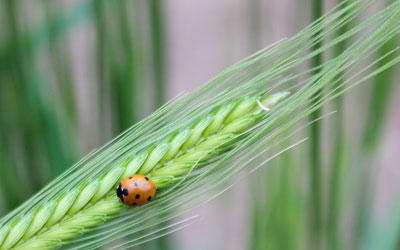Scientists call for safeguarding crop wild relatives in the Middle East

In a recently published article in Nature Middle East, Bioversity International’s scientist Ehsan Dulloo underlines the need for a more holistic approach when dealing with crop wild relative conservation.
"Wild-growing crops in the Middle East could be key to global food security and should be protected and utilized," says recently published article in Nature Middle East.
High concentrations of crop wild relatives can be found in Syria, Jordan, Palestine and other neighbouring countries of the 'Fertile Crescent' area – the same area where about 50% of world’s current crops originated.
Crop wild relatives are wild plant species that are genetically related to cultivated crops. Untended by humans, they continue to evolve in the wild, developing traits such as drought tolerance or pest resistance. "As a result, the crops have significant potential to provide breeders with genes that could enhance crop resistance to stresses such as climate change, pests and disease."
Conflict in several areas of the Middle East hinders the conservation of this precious gene pool and limits scientists' access to crop wild relatives. In addition, at a global level, only 10% of crop wild relatives are preserved in genebanks and "there are no efficient conservation efforts to preserve them in their natural habitats".
Ehsan Dulloo, leader of the Conservation and Availability Programme at Bioversity International, calls for a more holistic approach. "There is a disconnect between the needs of the agricultural sector and what the environmental sector is doing. Very often, people working in the environment sector are unaware of crop wild relatives, mostly because they are driven by ecosystem-wide approaches or specific-species conservation activities," Dulloo told Nature Middle East.
Read the full article 'Middle East wild crops essential for world food security' in Nature Middle East.
Photo: Ladybug resting on Einkorn wheat - one of the earliest cultivated forms of wheat. Credit: Bioversity International/N.Capozio
